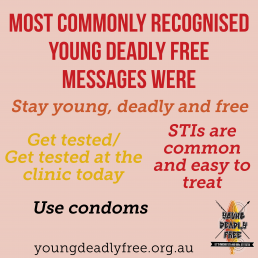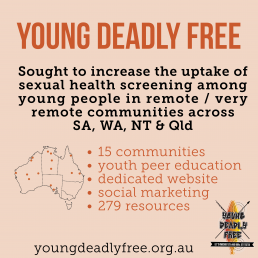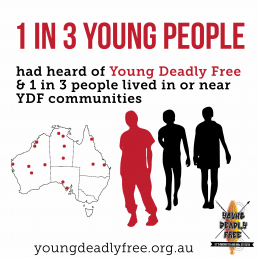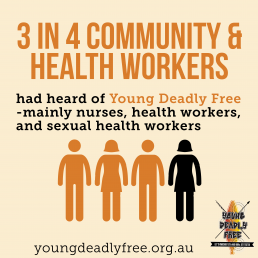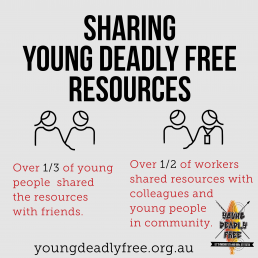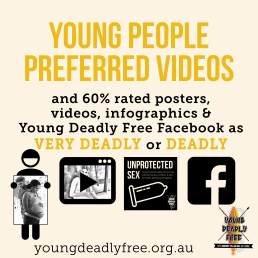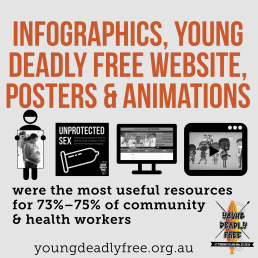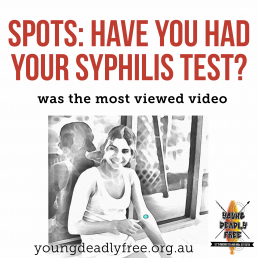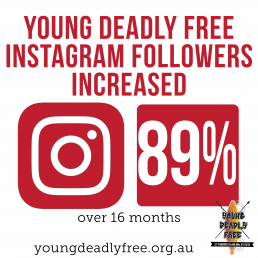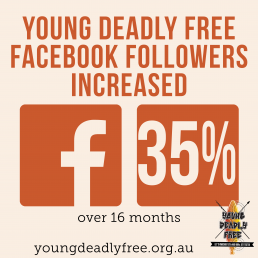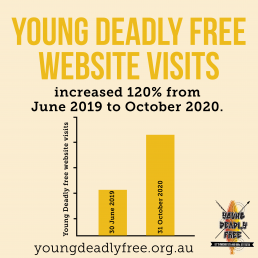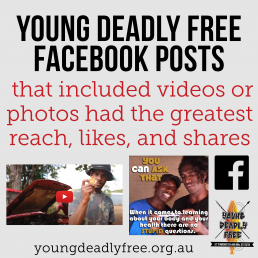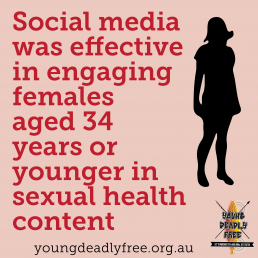Evaluation of the Young Deadly Free Project
The Sexual Health and Blood-Borne Virus Applied Research & Evaluation Network (SiREN), based at Curtin University, has completed two evaluations of the Young Deadly Free project.
Evaluation 1
The first evaluation, conducted in 2019, sought to:
- examine the uptake, reach, and impact of the peer education program for young people aged 16–29 years residing in the project implementation communities
- the uptake and reach of the Young Deadly Free resources through social media, website, and other channels
- determine the impact of the Young Deadly Free project on STI and BBV testing rates among young people aged 16–29 years residing in the project implementation communities.
Findings
SiREN, in collaboration with SAHMRI, have produced posters and published journal articles to promote findings from the initial evaluation of the Young Deadly Free project.
Posters
Click on the images below to view and/or save posters summarising selected Young Deadly Free evaluation findings for the youth peer education program, the uptake of the project’s health promotion resources, and the uptake and acceptability of project’s targeted resources for remote practice clinicians.
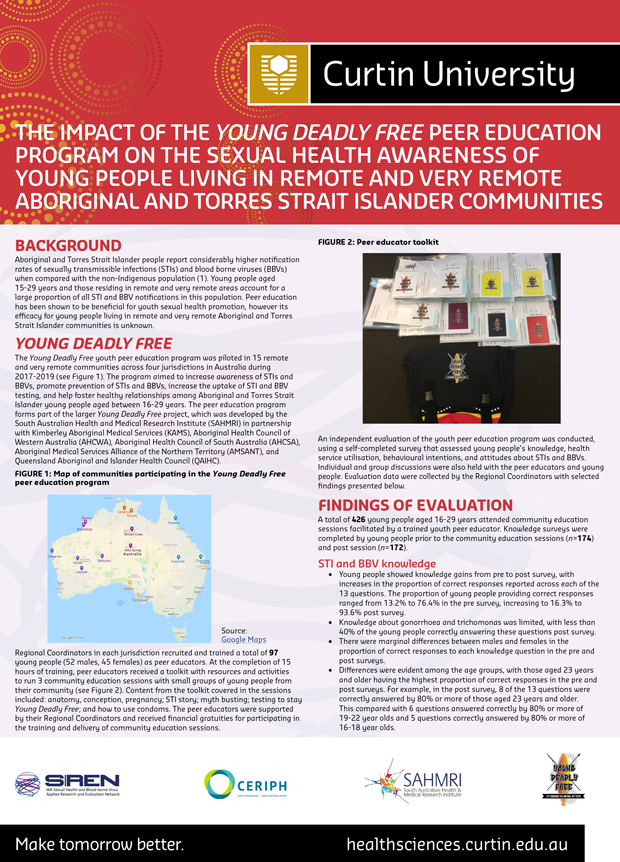
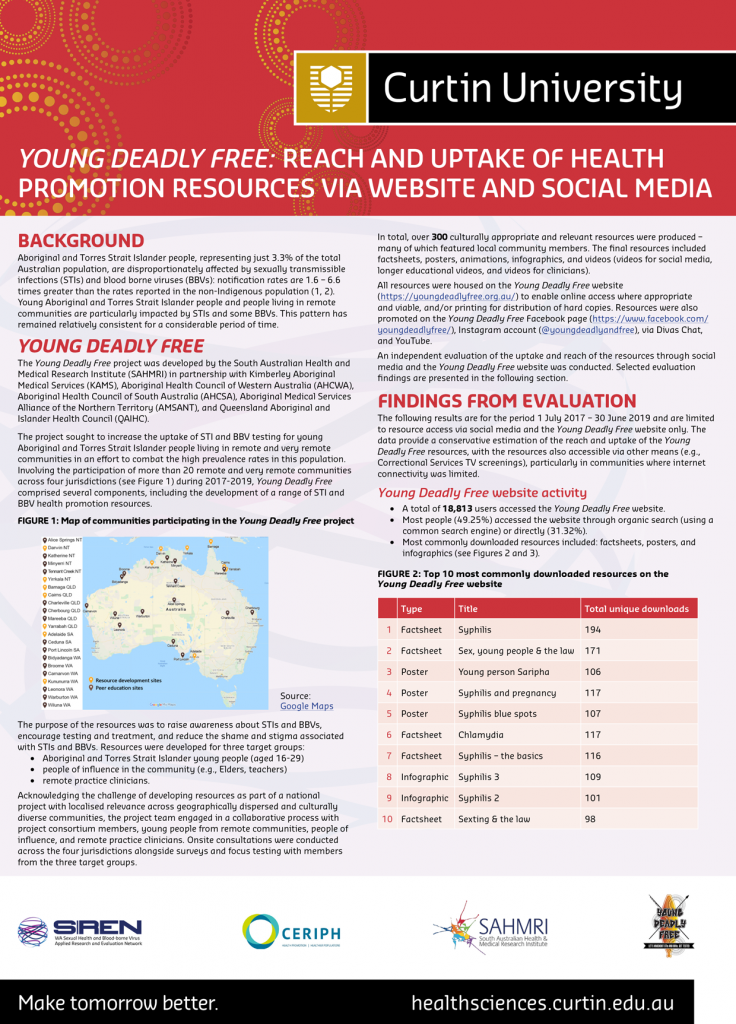
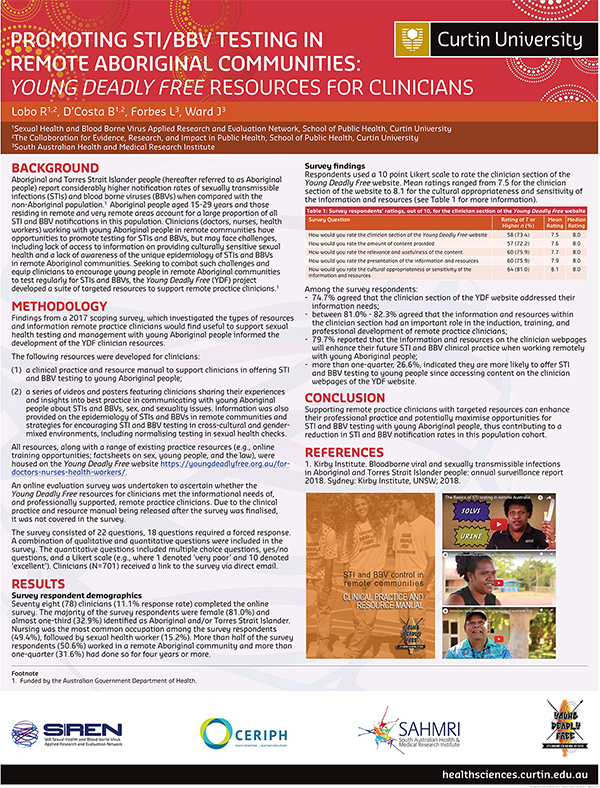
Journal articles
The following journal articles also report on selected findings from the project’s first evaluation.
Lessons learned from the implementation of the Young Deadly Free peer education programme in remote and very remote Australian Aboriginal communities. Belinda D’Costa, Roanna Lobo & James Ward. Sex Education. (2021).
Young Deadly Free: impact evaluation of a sexual health youth peer education program in remote Australian communities. Roanna Lobo, Belinda D’Costa, Linda Forbes, James Ward. Sexual Health. (2020)
Evaluation of the Young Deadly Free peer education training program: early results, methodological challenges, and learnings for future evaluations. Belinda D’Costa, Roanna Lobo, Jessica Thomas and James Steven Ward. Frontiers in Public Health (2019).
Evaluation 2
The second evaluation, conducted in 2020, focused on the reach and impact of the Young Deadly Free project’s resources and messaging 16 months after the project was completed. This evaluation sought to assess:
- awareness of the Young Deadly Free brand and resources among young Aboriginal people and health/community workers
- key message recall, resource use, and resource feedback from young Aboriginal people and health/community workers
- uptake, reach, and engagement with the Young Deadly Free website, social media, and resources
- challenges and enablers for sexual health promotion in remote communities.
Findings
A report detailing the evaluation findings was produced by SiREN. In collaboration with SAHMRI, SiREN also produced a series of infographics depicting key findings from the follow up evaluation of the Young Deadly Free project.
Report
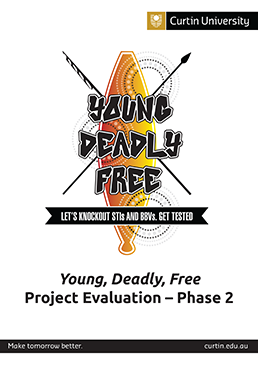
Infographics
Click on the images below to view and/or save key findings from the second evaluation of the Young Deadly Free project, reporting on awareness and key message recognition, resource preferences and uses, and website and social media engagement.
Awareness and Key Message Recognition
Resource Preferences and Uses
